Going Green: Ways to Make Your House More Sustainable
It’s the season for going green. Here’s how you can incorporate the green theme into your home year-round to make it more sustainable.
With spring looming and St. Patrick’s Day celebrations underway, green is a common thread in March.
Take the green theme home and use this month as some inspiration to go green in your house. Minor changes, like most of these, can make a big difference when it comes to sustainability and keeping it green all year round.
Turn off lights
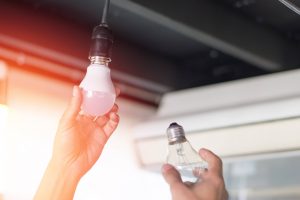
The easiest way to save energy at home is to turn off your lights. Don’t forget to switch them off each time you leave a room. Better yet, open up curtains or blinds during the day and let natural light work for you.
To take things to the next level though, when it comes to lighting, you have to look at your bulbs. Switching to compact fluorescent bulbs (CFLs) or LEDs makes your home instantly more energy efficient.
CFL bulbs use around a quarter less energy than traditional incandescent bulbs and last around ten times longer, all while putting out the same amount of light. LEDs use around three quarters less energy and last 15-25 times longer than traditional incandescent bulbs. They also outperform halogen incandescents.
Swapping out just five of your most frequently used light sources can save you up to $45 per year. Not only that, but lights that are more energy efficient require replacing less often, so you’re saving money on buying new bulbs. It takes less than a day to shop for the bulbs and swap out your light fixtures at home. It’s a quick and easy project for a greener house.
Stop wasting water
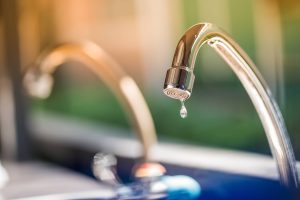
There are definitely hidden instances where you might be wasting water. We’ve all been told to shut the water off while brushing our teeth, but using our water in smart ways goes much further at home.
The average American uses 2,000 gallons of water each day. That’s a lot, but it’s easy to cut down without having to make major changes. First, you can make it a personal mission to conserve water by taking shorter showers. Shaving four minutes off your shower, if you’re in there for a long time, can save up to 30 gallons.
If that’s not really possible, you can conserve water around your house in other ways. If you wait to run your dishwasher, or do a load of laundry, until each appliance is totally full, you’re saving water. You’ll use those appliances less, so you’ll also save energy. Waiting to run these appliances during the cooler parts of the day — early in the morning or later in the evening — also helps make for a more sustainable process. Even only running cold cycles in your washing machine makes a difference.
You should also frequently check for water leaks. Even small drips add to your utility bill and increase wasted water totals. If you notice a leaky faucet, a drippy pipe, or even a running toilet, have a professional come out to address, and repair, the issue.
Manage electricity use
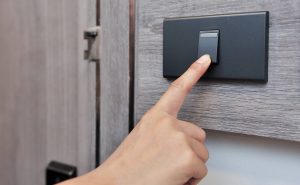
They’re known as energy vampires, and can steal up to 20 percent of your annual electricity use. We’re talking about appliances and other devices that steal energy when they’re not in use. By unplugging these bad boys when you’re on vacation, or even gone for the day at work, you’re turning your house into a greener space.
Using less electricity not only saves energy, but it saves money, and who doesn’t want a lower utility bill each month?
To get into the habit of denying your energy vampires the right to your electricity, make a daily checklist of appliances you want to unplug when not in use. Some of the worst offenders include:
- Video game consoles
- Cable boxes
- TV’s
- Stereos
- Phone or computer chargers
- Printers
- Digital clocks
- Coffee makers
- Electric toothbrushes
For easy on/off, consider plugging your energy vampires into power strips. Then, you won’t have to actually unplug everything, but rather just flip the switch on the strip itself to shut the culprits down.
Opt for energy efficiency
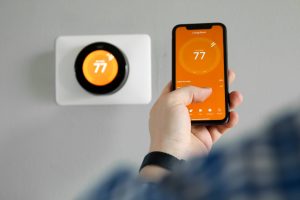
If you’ve ever shopped for new appliances, you’ve seen the energy star. This symbol means that particular appliance is more energy efficient, and a great choice for having a greener home. These appliances use less of everything, without sacrificing in quality.
Conserving water, lowering monthly bills, and decreasing your carbon footprint are all sustainable goals energy-efficient appliances help you reach. These appliances also prove beneficial in other ways. They often require less maintenance and parts need replacement less often.
Installing smart devices can also help create a more energy-efficient home. Things like thermostats help you go green because they give you more control over your home. If you forget to turn the heat down when you leave for the day, with a smart thermostat, you can do it from your phone. You’re also able to monitor settings that let the device think for you, making the best energy-efficient choices when you’re away.
Smart devices go beyond the thermostat though. You can install light bulbs you can control through an app. There are smart leak sensors that monitor your pipes in hard-to-reach places, like behind your washing machine. The list of available products continues to grow, but the one thing they all have in common is making it easier for you to live a more sustainable lifestyle.
Introduce a system for recycling
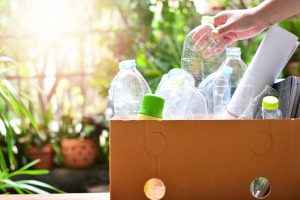
Another important way to think sustainably in your home is to look at your trash. That’s right. You should know what really belongs in a waste bin and what could get recycled. Even if your neighborhood doesn’t pick up recycling, there are opportunities in your city to drop off certain materials. Make sure you investigate so you know exactly what you should set aside to recycle. This includes knowing what numbered plastics are okay (they range from 1-7), as well as whether your area recycles glass.
If you’re recycling plastic, glass, or cardboard make sure all items are clean, empty, and dry. This means if something had food in it, and you can’t get all the food off, it’s not ready to recycle. However, many packages rinse clean or are at least partially salvageable for the recycle bin.
There are also those items you can set aside to recycle at specific locations. For example, a recycling center can’t accept plastic bags, like you get from the grocery, but there should be a dropbox for them at your local store. If you’re going there already, why not take your used bags with you to recycle.
Making a habit of recycling is the best way to ensure it’s something you continue doing at home.
Sustainable homes attract attention
Making all these changes while you’re living in a home helps lower your monthly bills and gives you piece-of-mind about your contribution to the well-being of the environment. It’s an added perk that these adjustments also come in handy when you’re ready to sell.
Homebuyers today often look for energy-efficient upgrades. They’ll appreciate energy-star appliances and smart devices already installed in a home for sale. It may just get you an offer faster.
However, even if you have a home, ready to sell, with all the sustainable upgrades, sometimes it’s hard getting your house to sell on your timeline. Then, there’s the uncertainty of working with homebuyers and ensuring all their finances stay in order until closing. To ease the tension involved in selling your home, consider working with Sundae. Our seamless and transparent process allows you to get an off-market offer faster, from a buyer who’s guaranteed to show up on closing day. Contact us today to learn more.
Ready to Get Started?
Sell as-is. Pay zero fees to Sundae. Move on your time. No repairs, cleanings, or showings.
